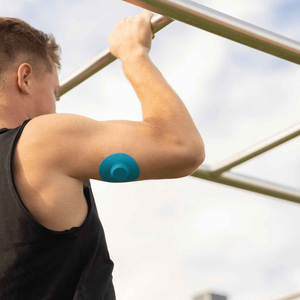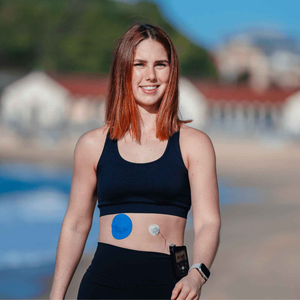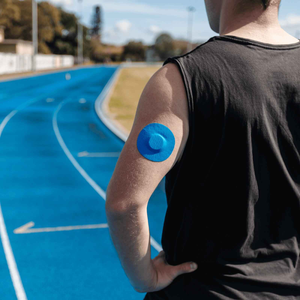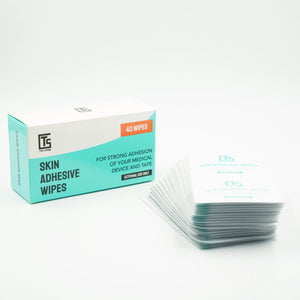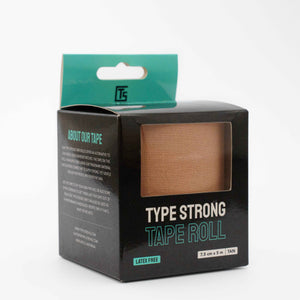Holiday meals are often rich, carb-heavy, and celebratory. For people living with diabetes or monitoring glucose levels, this can feel overwhelming. Large portions of stuffing, sweet desserts, and festive drinks can cause noticeable glucose spikes on your CGM.
But enjoying holidays does not have to mean strict avoidance. By understanding how your body processes food and using your CGM as a guide, you can build a plate that supports stable glucose levels and lets you enjoy every tradition.
Why holiday meals challenge your CGM
When you eat, carbohydrates are broken down into glucose. Some foods - such as mashed potatoes or sweet desserts - digest quickly, leading to sharp glucose rises. Others - like lean proteins, vegetables, and whole grains - digest more slowly, giving your body more time to use the glucose steadily.
Holiday meals often combine:
- High glycaemic index foods (white bread, pies, sweet drinks)
- Large portions served at once
- Extra fats and sugars in traditional recipes
This combination can show up on your CGM as spikes and dips. By understanding these effects, you can use food balance to your advantage. If you’re new to continuous monitoring, guides like your first FreeStyle Libre sensor explain how food responses can look in real life.
Building a balanced holiday plate
A simple plate method works well in almost any setting. It helps you avoid the “all-or-nothing” mindset and instead focus on proportion.
|
Plate section |
Examples |
CGM-friendly benefits |
|
Protein (¼ plate) |
Roast turkey, baked salmon, lean beef, lentils, tofu |
Slows digestion, reduces hunger, keeps glucose steadier |
|
Fibre-rich veg (½ plate) |
Brussels sprouts, green beans, carrots, leafy salads |
High fibre slows glucose absorption, adds bulk without spikes |
|
Carbs & extras (¼ plate) |
Small serving of stuffing, potatoes, or dessert |
Keeps traditions on the plate without overload |
This balanced approach also lines up with what many people find when exploring how food affects blood glucose.

Smart holiday food swaps
You don’t need to completely change family recipes. Small adjustments can make them more CGM-friendly without losing flavour.
|
Traditional choice |
CGM-friendly swap |
Why it helps |
|
Mashed potatoes with cream |
Mashed cauliflower or half potato-half cauliflower |
Lower carb load, higher fibre |
|
White bread stuffing |
Wholegrain or sourdough stuffing |
Slower digestion, less spike |
|
Candied yams with marshmallows |
Roasted pumpkin or sweet potato with cinnamon |
Keeps flavour but cuts added sugar |
|
Sugary cocktails |
Sparkling water with lime, or dry wine |
Less glucose spike from simple sugars |
|
Heavy cream desserts |
Greek yoghurt parfait with fruit |
Adds protein, moderates sugar absorption |
Even if you keep traditional recipes, your CGM can help you see which foods lead to sharper responses. That way, you can focus on swaps that make a difference for you.
People also ask
What is the best way to eat during the holidays with diabetes?
The best way is to build balanced plates that include protein, vegetables, and moderate carbs. Portion control and mindful eating are key. Your CGM helps you see patterns in real time, so you can learn from each meal.
Can I eat dessert with diabetes if I use a CGM?
Yes. Desserts can fit in small amounts, especially when eaten after a balanced meal. Pairing sweets with protein or fibre may help reduce rapid glucose spikes.
What drinks are safer for blood glucose at parties?
Water, sparkling water, and unsweetened tea are the most stable choices. Dry wines and light spirits may have less impact than sugary cocktails, but always check your CGM response.
Do holiday stress and sleep affect glucose as much as food?
Yes. Stress hormones and poor sleep can raise glucose levels, sometimes as much as food. For practical ways to manage overall comfort, see why some people look at CGM patch wear time alongside food planning.
Practical tips for CGM holiday eating
- Start with vegetables - filling half your plate with fibre first helps reduce appetite for high-carb foods.
- Pair carbs with protein - turkey with a scoop of stuffing is more stable than stuffing alone.
- Take smaller portions first - you can always go back for more, but smaller servings help you stay in range.
- Mind festive drinks - alcohol and sugar can spike or lower glucose unpredictably, so check your CGM before and after.
- Check patterns, not just moments - your CGM shows trends. A small spike is not failure - it is information to help you learn.

These strategies can help you avoid some of the common patch issues that come up during long celebrations, such as adhesive loosening after large meals or activity.
Keep your CGM secure through long celebrations
Holiday gatherings often mean hours of sitting, moving, eating, and sometimes dancing. Kitchens and parties can also be warmer than usual, leading to sweat that weakens adhesives. To stay confident, many users rely on CGM patches. Pairing patches with adhesive wipes can improve wear time, ensuring your sensor stays protected through the entire holiday season.
If you are travelling to family gatherings, guides like what to pack for patch care are also useful.
Internal resources to guide you further
You can build confidence in your holiday meals and patch care with these resources:
- Proper skin prep before big events
- How food affects blood glucose for meal planning insight
- Top patch issues during parties and travel
- Holiday patch care when travelling so your sensor stays secure wherever you celebrate
Closing thoughts
The holidays are about joy and connection, not perfection. A CGM is not there to restrict you but to teach you. By building balanced plates, making simple food swaps, and staying mindful of portions, you can enjoy festive traditions with confidence. E
very CGM reading is a learning opportunity, and with the right support - from food balance to patch security - you can focus on what matters most: time with loved ones.
